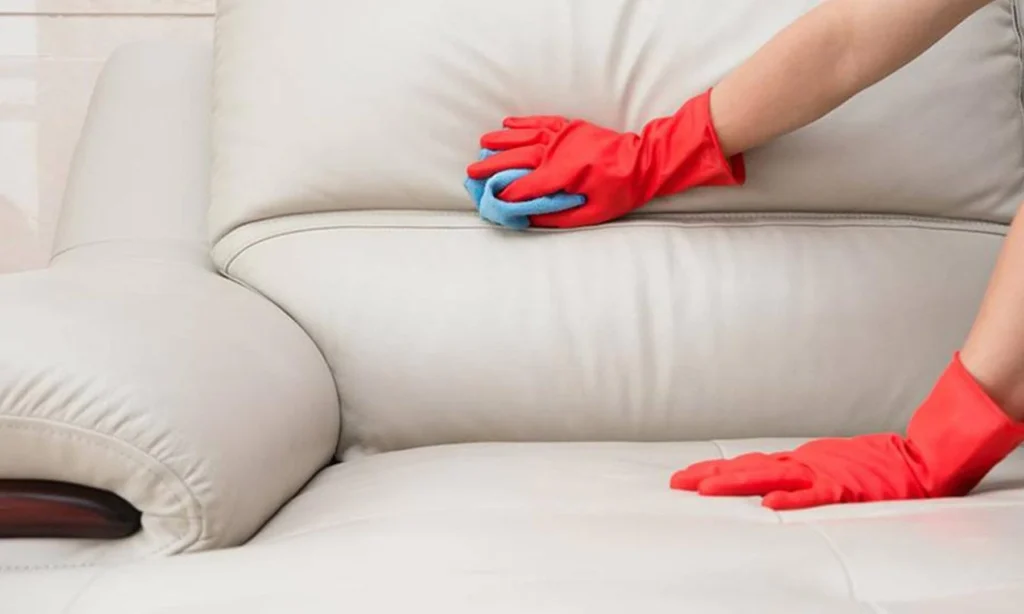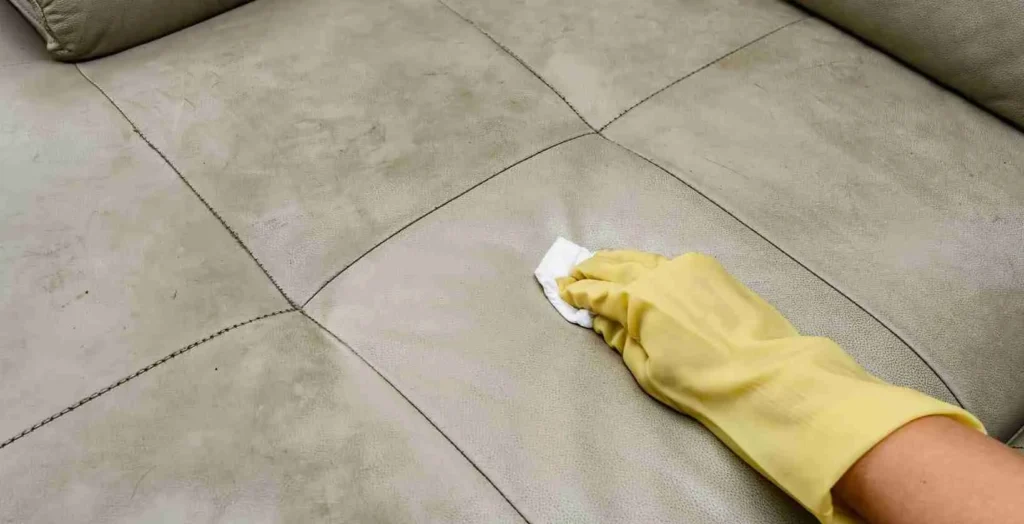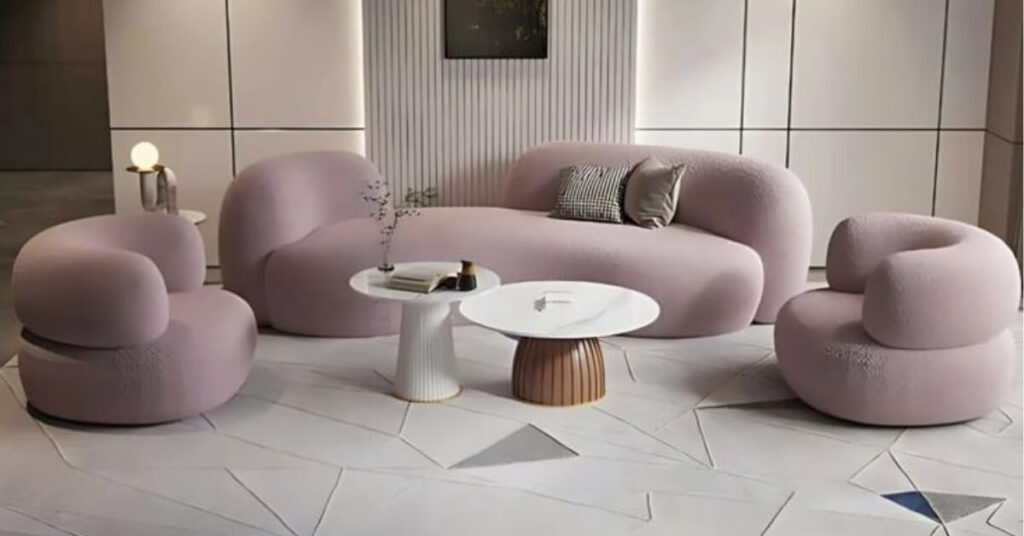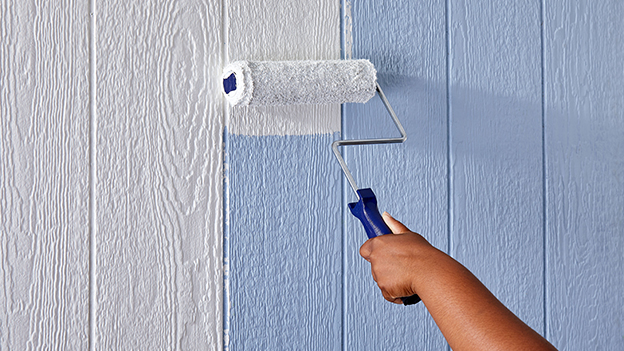Mold on leather furniture can be a frustrating problem that threatens both your investment and your health. However, learning how to clean mold off leather furniture properly can restore your pieces to their former beauty while preventing future growth.
Leather furniture provides the perfect environment for mold when exposed to moisture and poor ventilation. Furthermore, mold spores can spread quickly across surfaces, making immediate action essential. This comprehensive guide will walk you through safe, effective methods to eliminate mold and protect your leather furniture for years to come.
Understanding Mold Growth on Leather
What Causes Mold on Leather Furniture
Mold thrives in humid environments where moisture levels exceed 60 percent. Additionally, leather contains natural oils and proteins that provide nutrients for mold spores. Poor air circulation creates stagnant conditions that encourage rapid growth.
Common causes include water damage, high humidity levels, and storing leather furniture in damp basements or poorly ventilated rooms. Moreover, spilled liquids that aren’t cleaned immediately can penetrate leather fibers, creating ideal breeding grounds for mold colonies.
### Identifying Different Types of Mold
White mold appears as powdery patches on leather surfaces and typically indicates early-stage growth. Black mold presents as dark, fuzzy spots and poses serious health risks requiring immediate attention. Green mold often develops in areas with consistent moisture exposure.
Each type requires specific cleaning approaches, though basic removal techniques remain similar. However, extensive black mold infestations may require professional remediation services to ensure complete elimination and prevent health complications.
Essential Supplies for Mold Removal
Safety Equipment and Protection
Before beginning the cleaning process, gather protective gear including N95 masks, rubber gloves, and safety goggles. Proper ventilation is crucial, so open windows and use fans to circulate fresh air throughout the workspace.
Disposable coveralls prevent mold spores from contaminating your clothing. Additionally, keep children and pets away from the treatment area until cleaning is complete and surfaces are thoroughly dry.
### Cleaning Materials and Tools
White vinegar serves as an effective, natural antifungal agent for leather surfaces. Isopropyl alcohol (70% concentration) provides additional antimicrobial properties without damaging leather fibers. Soft-bristled brushes help remove surface mold without scratching delicate materials.
Clean microfiber cloths absorb moisture while minimizing fiber transfer. Furthermore, leather conditioner restores flexibility and prevents cracking after the cleaning process. Commercial leather cleaners offer specialized formulations designed specifically for mold removal.
Step-by-Step Mold Removal Process

Initial Assessment and Preparation
Begin by examining the entire piece to determine the extent of mold contamination. Take photographs for insurance purposes if damage is severe. Move the furniture to a well-ventilated area away from other items to prevent cross-contamination.
Remove any loose cushions or detachable parts for separate treatment. Moreover, vacuum surrounding areas to eliminate loose mold spores before beginning the cleaning process.
### Surface Cleaning and Treatment
Start by gently brushing away visible mold using soft-bristled brushes in circular motions. Work from the outside of affected areas toward the center to prevent spreading spores. Dispose of debris in sealed plastic bags immediately after removal.
Mix equal parts white vinegar and water in a spray bottle for natural treatment. Test the solution on an inconspicuous area first to ensure colorfastness. Spray lightly and wipe with clean microfiber cloths, changing cloths frequently to avoid recontamination.
### Deep Cleaning Application
For stubborn mold stains, apply isopropyl alcohol using cotton swabs for precise application. Allow the alcohol to sit for 10-15 minutes before wiping clean with damp cloths. Repeat the process as necessary until all visible mold is eliminated.
Commercial leather cleaners provide stronger formulations for severe infestations. Follow manufacturer instructions carefully and ensure adequate ventilation during application. Subsequently, rinse surfaces with clean, damp cloths to remove cleaning residue.
Drying and Conditioning Process
Proper Drying Techniques
After cleaning, allow leather furniture to air dry completely in a well-ventilated area. Avoid direct sunlight or heat sources that can cause cracking and discoloration. Position fans to promote airflow around all surfaces, including hard-to-reach areas.
Drying typically takes 24-48 hours depending on humidity levels and leather thickness. Check for complete dryness before proceeding to conditioning, as trapped moisture can lead to recurring mold growth.
### Leather Conditioning and Protection
Once completely dry, apply high-quality leather conditioner using circular motions with clean cloths. Conditioning restores natural oils removed during the cleaning process and maintains leather flexibility. Allow conditioner to absorb for the recommended time before buffing excess product.
Regular conditioning every 3-6 months prevents cracking and maintains leather’s natural resistance to moisture penetration. Choose conditioners specifically formulated for your leather type to ensure optimal results and longevity.
Prevention Strategies
Environmental Control Measures
Maintain indoor humidity levels between 30-50 percent using dehumidifiers or air conditioning systems. Proper ventilation prevents moisture buildup that encourages mold growth. Position leather furniture away from direct moisture sources like humidifiers or leaky windows.
Regular air circulation using ceiling fans or HVAC systems prevents stagnant conditions. Additionally, monitor basement and storage areas where leather furniture is kept for signs of excess moisture or poor air quality.
### Regular Maintenance Routine
Dust leather furniture weekly using microfiber cloths to remove particles that can trap moisture. Clean spills immediately with absorbent materials to prevent liquid penetration into leather fibers. Inspect furniture monthly for early signs of mold development.
Professional cleaning every 12-18 months maintains leather condition and identifies potential problems before they become severe. Furthermore, rotate furniture placement periodically to ensure even air exposure and prevent moisture accumulation in specific areas.
Frequently Asked Questions
1. Can I use bleach to clean mold off leather furniture?
No, bleach can permanently damage leather by causing discoloration and weakening fibers. Use white vinegar or isopropyl alcohol instead for safe, effective mold removal.
2. How long does it take to completely remove mold from leather?
Complete mold removal typically takes 2-3 days including cleaning, drying, and conditioning phases. Severe infestations may require multiple treatment cycles.
3. Is moldy leather furniture safe to keep indoors?
Moldy leather furniture poses health risks and should be treated immediately or removed from living spaces. Successful cleaning eliminates most health concerns.
4. Can mold return after cleaning leather furniture?
Yes, mold can return if humidity levels remain high or moisture sources aren’t addressed. Proper environmental control prevents recurrence.
5. Should I hire professionals for severe mold problems?
Professional remediation is recommended for extensive black mold or when health conditions make DIY cleaning inadvisable. Experts have specialized equipment and training.
6. What’s the best way to prevent future mold growth?
Maintain 30-50% humidity levels, ensure proper ventilation, clean spills immediately, and condition leather regularly to prevent future mold issues.
Protecting Your Investment Long-Term

Successfully removing mold from leather furniture requires patience, proper techniques, and ongoing prevention efforts. Regular maintenance and environmental control significantly reduce the likelihood of future mold problems while preserving your furniture’s beauty and value.
Remember that early intervention produces the best results when dealing with mold contamination. By following these proven methods for how to clean mold off leather furniture, you can restore damaged pieces and implement preventive measures that protect your investment for years to come.
As an Amazon Associate, I earn from qualifying purchases.





